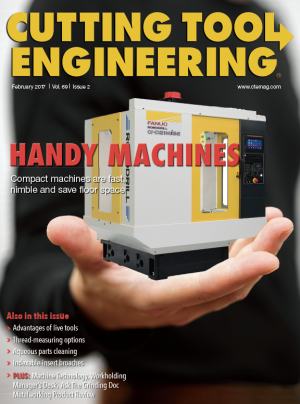There have been days when it was easy to be a pessimist and see the glass as half-empty.
But eventually, perhaps when least expected, something provides inspiration and my inner optimism returns. One such event occurred with an employee I’ll call “Mario.”
Mario and his wife immigrated to the U.S. She is a U.S. citizen who works for the Veterans Administration. They have four children, a stable family and are a great example of a hard-working couple trying to make it.
Mario came to our shop’s attention 2 years ago, when a newly hired manager of our company recommended Mario after they had previously worked together at a customer’s facility. Our manager assured us Mario would be a worthy addition. At the time, we determined our best approach was to employ him through a staffing company and offer him a 2- to 3-month trial run. Then if he wasn’t a good fit, he could be easily released. In Mario’s case, his favorable referral proved accurate, and we started efforts to make him a permanent employee.
He was excited and everything seemed to be moving forward in a positive fashion until an unexpected issue arose. The staffing company explained that there was a problem with the renewal of his work visa and, until resolved, he couldn’t be legally hired by our company. Mario quickly contacted an immigration attorney and said the matter should be corrected soon, allowing us to continue the hiring process.
Unfortunately, what was supposed to be “soon” turned into 18 months of waiting and uncertainty. During this period, the staffing company was legally able to retain him and continued to contract him out to our company, but hiring him permanently wasn’t possible until the visa was renewed. While we continued to benefit from his work, we had to pay the staffing company a fee each payroll, complicating Mario’s chance to earn extra pay because of our additional cost.
I could see he was stressed because his wife and kids were legal, but he was in a gray area of bureaucratic confusion, unable to be permanently hired or receive a well-deserved raise. Every month or two I’d request an update and got the same response, “We’re waiting to hear back.”
Then in January, unexpectedly, after many phone calls, attorney fees and numerous visits to immigration offices, Mario brought us a renewed work visa and a confirmation letter that a legal identification number was pending. After getting a copy, I quickly went to the shop to verify what I read. The relief on his face and total appreciation of this opportunity spoke volumes and was very humbling. He thanked me for not giving up and terminating him.
My worst days rarely consist of the stress he and his family endured for more than 18 months. After it was all said and done, it was cool to see the system had worked and that a good worker, husband and father could move forward in life.
Mario’s story isn’t an argument for or against immigration, but a personal and impactful experience. And from the standpoint of our machining business, knowing a top-notch CNC lathe operator can continue to produce high-quality parts on our behalf is an awesome result. I'm glad to have Mario on the team!
Related Glossary Terms
- computer numerical control ( CNC)
computer numerical control ( CNC)
Microprocessor-based controller dedicated to a machine tool that permits the creation or modification of parts. Programmed numerical control activates the machine’s servos and spindle drives and controls the various machining operations. See DNC, direct numerical control; NC, numerical control.
- lathe
lathe
Turning machine capable of sawing, milling, grinding, gear-cutting, drilling, reaming, boring, threading, facing, chamfering, grooving, knurling, spinning, parting, necking, taper-cutting, and cam- and eccentric-cutting, as well as step- and straight-turning. Comes in a variety of forms, ranging from manual to semiautomatic to fully automatic, with major types being engine lathes, turning and contouring lathes, turret lathes and numerical-control lathes. The engine lathe consists of a headstock and spindle, tailstock, bed, carriage (complete with apron) and cross slides. Features include gear- (speed) and feed-selector levers, toolpost, compound rest, lead screw and reversing lead screw, threading dial and rapid-traverse lever. Special lathe types include through-the-spindle, camshaft and crankshaft, brake drum and rotor, spinning and gun-barrel machines. Toolroom and bench lathes are used for precision work; the former for tool-and-die work and similar tasks, the latter for small workpieces (instruments, watches), normally without a power feed. Models are typically designated according to their “swing,” or the largest-diameter workpiece that can be rotated; bed length, or the distance between centers; and horsepower generated. See turning machine.
- relief
relief
Space provided behind the cutting edges to prevent rubbing. Sometimes called primary relief. Secondary relief provides additional space behind primary relief. Relief on end teeth is axial relief; relief on side teeth is peripheral relief.


